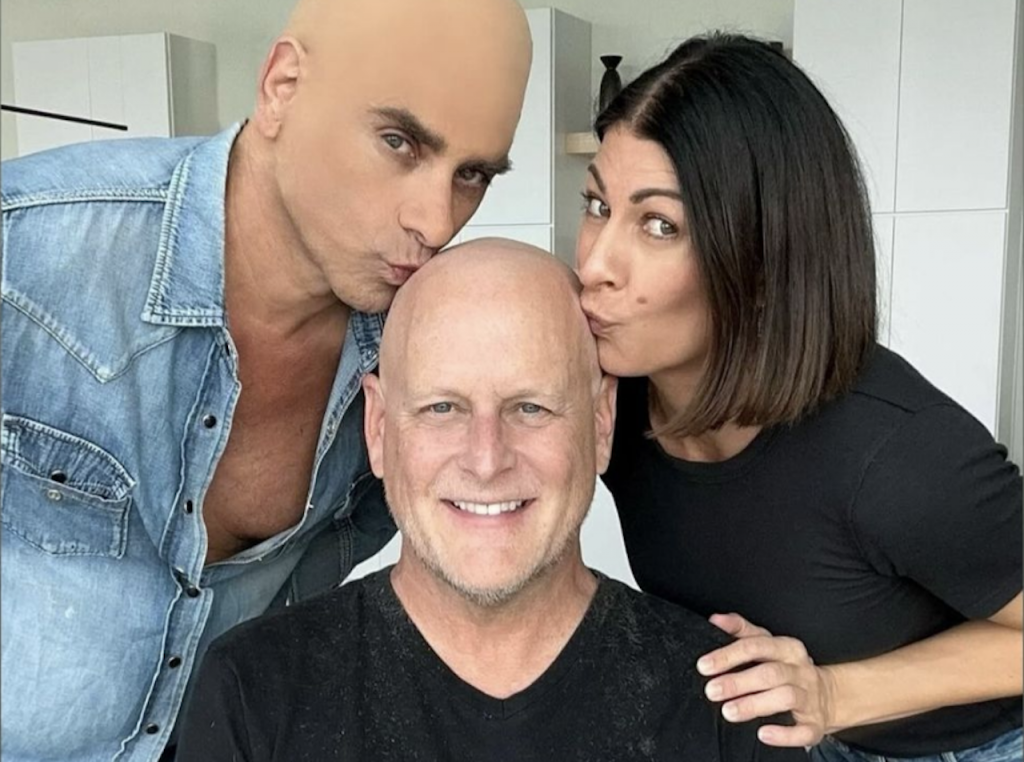The Power of Prayer When Faced With Cancer
- Former “Full House” stars rally around actor Dave Coulier, 65, who portrayed “Joey” on the popular sitcom. Coulier was diagnosed with stage 3 non-Hodgkin lymphoma – a type of blood cancer – and is currently undergoing chemotherapy for treatment.
- Coulier’s “Full House” co-star Candice Cameron Bure, 48, says she’s leaned on her faith to cope with the diagnosis.
- A study published in Cancer includes data that found “69% of cancer patients reported praying for their health” compared to “only 45% of the general U.S. population.”
- New York City Presbyterian Pastor Tom Evans previously spoke with SurvivorNet about how faith can help people cope with the complex emotions that come with cancer.
- Lymphoma is a blood cancer, specifically of the immune system, that affects infection-fighting cells called lymphocytes.
- Lymphoma treatment largely depends on the nature of your specific diagnosis. For non-Hodgkin lymphoma patients, their cancer is more likely to spread randomly and be discovered in different groups of lymph nodes in the body.
When former “Full House” star Dave Coulier, 65, who portrayed “Uncle Joey” on the sitcom, bravely shared that he was battling stage 3 non-Hodgkin lymphoma – a type of blood cancer – it not only impacted his family, who is no stranger to cancer diagnoses, it also profoundly affected his television family.
Former “Full House” co-star John Stamos, 61, recently donned a bald cap to share a photograph with Coulier in solidarity. Coulier is now bald due to the side effects of chemotherapy, which can cause hair loss.


Many of the cast members remained friends many years after the show ended. Cameron Bure says she understands Coulier’s cancer diagnosis is treatable, but a diagnosis is still hard for her to wrap her head around.
“It didn’t hit me for a few weeks because when you hear that someone has cancer, at least for me, I just didn’t want to accept it,” Cameron Bure said.

When she saw Coulier start to lose his hair after undergoing chemotherapy, she was reminded of the seriousness of his diagnosis. To help her cope, Cameron Bure turned to her faith.
“I was like, Dave, I’ve been praying every day…we can laugh, and we can make as many jokes – Dave loves to handle things through humor, which was why we loved that John [Stamos] put the bald cap on — it was great, and Dave thought it was hilarious. [But] I told Dave and Mel the best way I can support you is to pray for you every day because you know that my faith is strong,” Cameron Bure explained.
Turning to faith is common among cancer patients and their loved ones, as it can aid their mental health during trying times.
Expert Resources on non-Hodgkin Lymphoma
Coulier’s Non-Hodgkin Lymphoma Journey
Coulier revealed he had been battling stage 3 non-Hodgkin lymphoma in early November. The actor was no stranger to the impact of a cancer diagnosis. His mom and sisters all were diagnosed with a form of cancer.
“I saw what those women in my family went through, and I thought to myself, ‘If I can be just 1/10th of a percent as strong as they were, then I’m going to be just fine,” Coulier told US Magazine.
“Non-Hodgkin lymphoma is a big category,” Dr. Julie Vose, chief of hematology/oncology at the University of Nebraska Medical Center, previously told SurvivorNet.
All non-Hodgkin lymphomas begin in white blood cells known as lymphocytes, which are part of your body’s immune system. From there, doctors separate these cancers into types depending on the specific kind of lymphocytes they grow from B cells or T cells.
WATCH: The type of lymphoma you have matters.
Knowing which of these you have can help steer you to the most appropriate treatment.
One way doctors divide up these cancers is based on how fast they’re likely to grow and spread. “The two main classifications I think of in terms of non-Hodgkin lymphoma are lymphomas that are more indolent and those that are more aggressive because those are treated very differently,” Dr. Jennifer Crombie, medical oncologist at Dana-Farber Cancer Institute, tells SurvivorNet.
Most non-Hodgkin lymphomas, about 85%, affect B-cells. These cells produce antibodies and proteins that react to foreign substances like viruses or bacteria in your body. The antibodies attach to another protein on the surface of the invading cells, called an antigen, to target and destroy them.
Coulier is currently undergoing chemotherapy and is expected to complete it in February 2025. One of the notable side effects of chemo is hair loss.
WATCH: Hair loss during chemo.
Hair loss can be an emotional stage of anyone’s cancer journey. SurvivorNet has tips and resources for anyone facing this side effect and struggling to manage it.
“For cancer patients, losing one’s hair can be unbelievably stressful. To start with, the dread of losing one’s hair can lead to some sleepless nights and feelings of anxiety,” Dr. Samantha Boardman, a New York-based psychiatrist and author, told SurvivorNet.
Chemotherapy can cause hair loss. It usually begins about three to four weeks after chemotherapy and continues throughout treatment.
This happens because this treatment targets quickly dividing cells throughout the body, including cancer cells and hair cells.
Most patients can expect regrowth four to six weeks after treatment. However, when your hair grows back, you may notice some changes in its color and texture.
Dr. Boardman suggests connecting with others experiencing cancer treatment like yours and asking them for first-hand advice.
“Talk to people who have been through it, get their advice, voice your concerns to your caregiver, and see what they can do,” Dr. Boardman added.
If losing your hair is a concern before cancer treatment, know you have options like wigs, hats, wraps, and more.

Coulier told People Magazine he received a bone marrow test that returned negative.
“At that point, my chances of being curable went from something low to a 90% range. So, that was a great day,” Coulier said.
Treating Lymphoma Patients
“There are some lymphomas that are very treatable but not curable,” Dr. Lawrence Piro told SurvivorNet.
Dr. Lawrence Piro is the President and CEO of The Angeles Clinic and Research Institute in Los Angeles, a Cedars-Sinai affiliate. He adds that some lymphomas progress quickly if left untreated.
Lymphoma treatment largely depends on the nature of your specific diagnosis. For non-Hodgkin lymphoma patients, their cancer is more likely to spread randomly and be discovered in different groups of lymph nodes in the body. Hodgkin lymphoma cancers, on the other hand, are more likely to grow consistently from one group of lymph nodes directly to another.
WATCH: Understanding R-CHOP treatment.
Non-Hodgkin lymphoma treatment depends on the type, stage, and how fast it grows. People with aggressive non-Hodgkin lymphoma can expect to get a chemotherapy combination called R-CHOP, which is a drug cocktail consisting of chemotherapy drugs plus an antibody drug and a steroid to treat diffuse large B-cell non-Hodgkin lymphoma.
R-CHOP stands for:
- R: Rituximab (Rituxan) is a monoclonal antibody that attaches to a specific protein called CD20, which sits on the surface of B cells. It targets cancerous cells and destroys them.
- C: Cyclophosphamide is a type of chemotherapy drug
- D: Doxorubicin hydrochloride (hydroxydaunomycin) is a type of chemotherapy drug
- V: Vincristine sulfate (Oncovin) is a type of chemotherapy drug
- P: Prednisone is a steroid which lowers inflammation
Patients receiving R-CHOP receive the drug in six cycles that are three weeks apart.
“R-CHOP is a cocktail of drugs. There are five different drugs in that recipe,” Dr. Jennifer Crombie, medical oncologist at Dana-Farber Cancer Institute, tells SurvivorNet.
R-CHOP side effects can include:
- Tiredness and weakness
- Hair loss
- Mouth sores
- Bruising and bleeding
- Increased risk of infection
- Appetite loss and weight loss
- Changes in bowel movements
How Faith Can Help Your Cancer Journey
Having faith can help keep your spirits high even during times of struggle. SurvivorNet experts also say it helps cancer patients during their cancer journeys.
New York City Presbyterian Pastor Tom Evans previously spoke with SurvivorNet about the importance of finding ways to cope with the complex web of feelings you may be experiencing after a challenging health diagnosis, such as cancer or a threatening tumor.
“It’s important to reach out in a simple prayer to God, even if you’ve never prayed before, you don’t know what to say, a heartfelt plea, ‘God, help me, be with me,'” Pastor Evans told SurvivorNet.
“You can reach out to God, and you can reach out to people, your friends and family, and say, ‘I can’t do this on my own. I need you.’ “It’s in that willingness to be open and to receive that we can find something deeper that we never would’ve encountered without this hardship,” Evans continued.
WATCH: Turning to Faith During a Cancer Journey.
A study published in Cancer includes data that found “69% of cancer patients reported praying for their health” compared to “only 45% of the general U.S. population.”
Cancer psychologist Dr. Andrew Kneier helped co-author “Coping with Cancer: Ten Steps toward Emotional Well-Being.” He also co-authored a column published by Stanford Medicine with Rabbi Jeffery M. Silberman, director of spiritual care at Danbury Hospital in Connecticut.
The two add more context to the impact faith has on cancer patients.
“A person’s faith or spirituality provides a means for coping with illness and reaching a deeper kind of inner healing,” Kneier and Silberman said.
“Coping means different things to different people: it can involve finding answers to the questions that illness raises, it can mean seeking comfort for the fears and pain that illness brings, and it can mean learning how to find a sense of direction at a time of illness. Religious teachings can help a person cope in all these dimensions,” Kneier and Silberman continued.
Learn more about SurvivorNet's rigorous medical review process.

